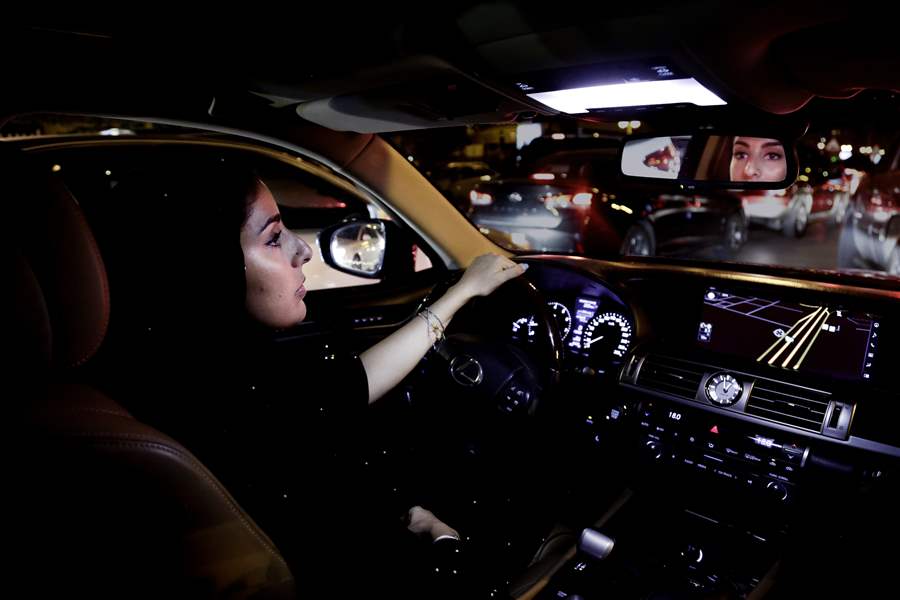
Keep reforming Saudi Arabia
7/1/2018
Hessah al-Ajaji drivers her car down the capital’s busy Tahlia Street after midnight for the first time in Riyadh, Saudi Arabia, on June 24.
ASSOCIATED PRESS
Women in Saudi Arabia finally hit the road last month, getting behind the wheel for the first time after the ultra-conservative kingdom lifted its ban on women driving.
In a much heralded modernization, the government of King Salman bin Abdulaziz Al Saud announced last fall that the ban would be lifted. Many analysts credited his son, 32-year-old Crown Prince Mohammed bin Salman with championing women’s right to drive as part of his broader campaign to modernize the kingdom.
Click here to view more Blade editorials
The public campaign to end the ban began in dramatic fashion on 1990 when a group of women activists drove openly on the streets of Riyadh in protest. They knew they would be arrested and punished severely, which they were. The women lost their jobs, faced public backlash, and, tellingly, were banned from traveling abroad.
Many defenders of the driving ban have argued, over the decades, that it has important religious origins. Women should not drive because allowing women that much freedom will lead to the destruction of a moral society, their argument goes.
But the punishment those earliest protesters faced revealed the real reason authorities have fought to keep women from being allowed to drive themselves — they need to curtail women’s freedom of movement.
That women in Saudi Arabia have been prevented from legally driving is only a portion of what constrains them there. Saudi Arabian women are subject to strict guardianship laws that mean they must have permission from their husbands or another close male relative to do almost anything, from getting married to opening a bank account or renting an apartment.
Saudi Arabia also used to restrict women’s education. That changed in the 1950s and 1960s when the first schools and universities opened to women, but only after many years of protest and campaigning — not unlike the decades of advocacy that preceded the end of the driving ban. Saudi women now outnumber Saudi men in college.
Other modernizations have come in recent years with women being granted the vote and the right to run for municipal office in 2015.
Supporters of women’s rights around the world hope that the end of the driving ban signals more freedom may be on the horizon for Saudi women. Some pessimists say the kingdom’s rulers are more concerned with the economic necessity of ensuring all those educated Saudi women can drive to their jobs.
They may be able to drive themselves to work now, but Saudi women still need a male guardian’s permission to get work in many cases.
If Saudi reformers, such as they are, want to continue building a strong 21st century economy and sending the message to the wider world that they’re serious about modernization and women’s rights, they will end the guardianship laws that are really keeping Saudi women in the back seat.